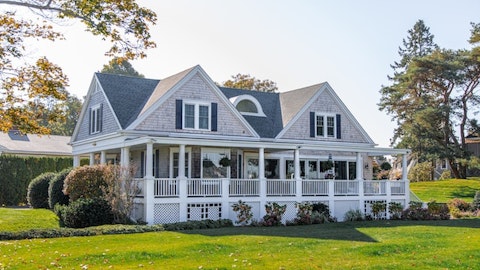Mark Yost: I think overall price mix will be, as you heard me say, there are several states and several geographies that have a tremendous amount of volatility in their year-over-year performance and a lot of that is just due to those changing demand levels for different product types and getting those to market and getting the consumers to those different price points and different product types. As that customer evolves, I think you’re going to see for some of those states that have the year-over-year large declines in volumes. I think that’s where you’ll see the adjustment in probably the next quarter or two. Then you’ll start to see things stabilize and then I think you’ll see kind of upward momentum in a handful of quarters from now with those prices, it’s really just readjusting the price points and the needs for what today consumers need and that rollout has not happened uniformly across all the states yet. It’s still in progress.
Operator: Our next question comes from Mike Dahl from RBC Capital Markets.
Mike Dahl: I had a follow-up on Regional Homes. And so when we think about the difference in terms of where the quarter shook out versus what the guide was, it implies a really sizable difference in terms of the Regional contribution. I appreciate you kind of described some better trends there, but is there anything else you can kind of point to in terms of was the ultimate timing of the close of the acquisition different than you had anticipated? Was there anything maybe one time about trying to work down some of their backlog that boosted the sales in the quarter, just because I think, maybe even been like a 50% differential versus what seemed to be embedded in the guide a quarter ago. Any additional color would help?
Mark Yost: Yes. I don’t know that it was that material of a difference in kind of our thought process going into the quarter, Mike. I think it was stronger. Like I said, Louisiana and Mississippi are, during the quarter had very, very strong growth in terms of just industry output. I think that was really a good indicator and even through December it was phenomenal. I think Mississippi was up 90% year-over-year in December. I don’t think we saw that or anticipated that strong of year-over-year growth in that region. But I would say, a lot of it came from stronger industry drivers in those states, better performance out of Georgia kind of that region, maybe a little bit better performance out of Texas. I really think there was a handful of geographies that kind of ebbed and flowed and performed a little better, along with obviously the strongest performance really out of Mississippi and don’t forget Regional is heavily retail focused.
And as we’ve mentioned, retail and builder developer have been very strong this year and continue to be, it’s really the community focus and the REITs that have been often are starting to return.
Mike Dahl: And that as core there wasn’t any sort of concerted effort to kind of just close out some of the backlog that you acquired?
Mark Yost: No, definitely not. No, just normal operations.
Mike Dahl: And then second, maybe also just a point of clarification around the Triad Venture and the ECN stake. I think technically that deal, you had that closed for the entire quarter. Was there a contribution from either kind of the ramp of the finance venture or just your income derived from your stake in ECN? And if so, where was that on the P&L?
Laurie Hough: So we did have of small piece from the ECN investment, we recorded and other income and expense, dividend income of about 600 grand and then that was offset by our share from the common stock of ECN’s losses for their September quarter of about 200 grand. So a net positive and other income of about 400 grand. There was no activity from the JV in this quarter, we’re going to record that on a one quarter lag, just like the losses from ECN. The dividends are in the current period.
Mike Dahl: And will all of those come through effectively the other income line or will there be different account and treatment for the different pieces?
Laurie Hough: Yes, everything through other income. And it’s all broken out pretty clearly in the Q1 we filed that this afternoon.
Operator: Our next question comes from Jay McCanless from Wedbush Securities.
Jay McCanless: Could you talk to us about where charter rates were during the quarter and where they’ve trended since the beginning of the calendar year?
Laurie Hough: Channel rates were anywhere from 8.5% to 10% this quarter, I think that they’ve trended up basically since the beginning of 23%. Since the beginning of this year, they’ve been relatively flat. They lag, Jay, generally on the 30-year fix. So it does take a little bit longer for channel rates to come down relative to the 30-year fix.
Jay McCanless: And then based on the 8-K you were talking about, it looks like regional did $414 million in trailing 12 month sales as of April 2023. Where is regional trending relative to that year-to-date and I thank you for the disclosure for the current quarter, but would love to know how they’re sizing up versus what they did in their 2023 year?
Laurie Hough: So Jay, the 8-K has their results as of June 30th for their period and then just obviously the year December of ’22. They did have Disaster Relief Housing and their revenue. So it’s not really apples-to-apples. This quarter was more core product, was all core product actually.


